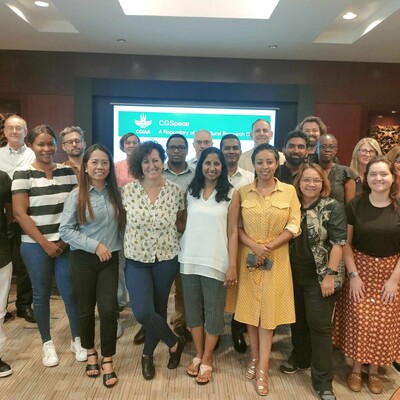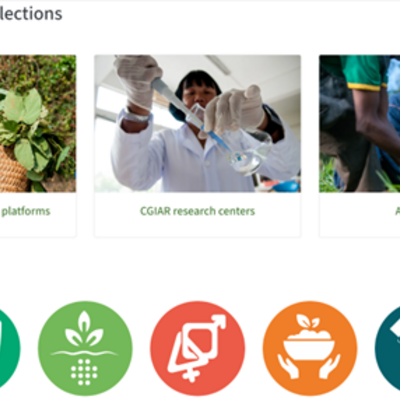
Fear of the blank box: why and how to post updates on Yammer, LinkedIn etc.?
Writers fear the blank page.
Bloggers fear the blank screen.
Many of us also seem to fear the ‘blank box’. What should we write in that Yammer, Twitter or LinkedIn text box that invites us to share a status or update.
It’s somewhat strange since many of us have no problem posting updates in the Facebook blank box for friends and relatives. And there’s lots to share.
The catch is that Yammer, LinkedIn and Twitter are more for work. This seems to freeze our creative juices, curtail our writing appetite.
I’m trying to comprehend. And I think I do.
Why do people freeze?
- They may too busy to share ‘stuff’ on professional social networks;
- They may not see the value of investing time in these networks;
- What they see there is of no direct, immediate value to them;
- They get frustrated at all the notifications they receive from these networks so they’re put off by it;
- If they are interested in making use of these networks they may not know exactly what is expected of them;
- …or what kind of ‘stuff’ they should write;
- They may have technical limitations with this too…
Well, here are some answers for your questions:
You don’t have time? Perhaps reconsider from the long term perspective?

Do we really have no time to look at possible improvements? (image credit: unknown)
We are all busy. All super busy. And our attention is divided by many signals, to-do’s, emails and a variety of strange attractors. But the point is: sharing some information on social media sometimes helps others gain time. And you would appreciate that time gain also. Various people have written about the time gains obtained through social media when used professionally. The main reason is: social media and networks are information filters. And this idea is not new (see the presentation below), it is a reality.
So think twice before saying you don’t have time to save time and be smart(er).
Why invest in social media when they are full of irrelevant, fluffy-bunny ‘stuff’?
This is one of the most common misconceptions about social media.
Yes, it is true that some people talk about their favourite brand of clothes, or share what they just ate on Twitter and the like.
Yes one can waste a lot of time spending time on social networks.
And yes a lot of that ‘noise’ is totally irrelevant to you.
But that is only if:
- People use social networks for personal purposes, not professional purposes.
- And the bottom line is thus to know who to follow on these social media. Follow quality, you get quality. Follow garbage, you get garbage.
- Most importantly, social networks bring value on an ‘on-demand’ basis. You’re the one who calls the shots. Don’t let your flow of information being ‘polluted’ by noise. Take control over your inbox and your RSS feeds.
If you do that, social media provide a lot of very relevant value to your work. Very established organizations (covered by very respected media) have demonstrated that a lot of value can come from social media engagement.
You can’t deal with these eternal ‘notifications’ jumping at you – so you’ve given up on social networks
There is nothing as irritating as receiving endless messages from the same source, to the extent that you don’t even bother checking them any longer.
And yet there is nothing so simple as this kind of problems to fix. Nowadays pretty much every social network (be it Yammer, LinkedIn, wikis etc.). Don’t let this frustration take over your experience with social media. And if you’re not exactly sure how to set your notifications, ask your communication and knowledge management (CKM) colleague(s) for help. We are there to do this, among others!
You are ok to use these social networks but don’t really know what to do with them?
ILRI has a lot of different websites, platforms and channels for communication. It’s confusing.
But then you don’t need to use most of them. Only the ones that matter to your specific team / program (e.g. a website and a wiki). And corporate ‘engagement’ channels: Yammer and LinkedIn. You may only need to go to specialized sites for specialized content (e.g. presentations on Slideshare, photos on FlickR) and usually the comms specialist of your team or unit takes care of this.
Here is what to remember:
- Use Yammer for ILRI/CGIAR-internal updates. There are however external Yammer networks set up for specific programs etc.
- Use our LinkedIn group if you want to engage with a broader group of people working on livestock research/development issues.
- Use wikis to collaborate over time around a specific issue, theme, project, document, with your team members. If it’s for a specific document for a limited period of time.
And we are sure you have your own social networks (e.g. Researchgate etc.) – we would love to hear which ones you use and why…
You don’t mind using professional social networks but you don’t really know what to share / write
That is the real ‘blank box’ syndrome. And it is a real issue: are you supposed to talk about your publications? Your questions? Your challenges? Your team’s work? Your upcoming projects? Your funding opportunities?
Actually, all of this and more, if you want to.
It all boils down to ‘working out loud‘ – the idea that you:
- document your work to better understand how it works and how you can improve;
- narrate and share this work with a broader public as it might help others facing similar challenges etc.;
- lead in this with generosity, showing the way to others, so they become similarly useful;
- build a social network – which can become your ‘personal learning network’ (see the presentation below about this);
- make it all purposeful so that you don’t just document everything all the time (well, it’s your right) but focus on the resources and networks that make sense in your current personal and organizational objectives.
So what are some examples of useful things to share on Yammer, LinkedIn etc.?
Your latest publication, your questions, your answers to other peoples’ questions, your interesting (professional) reads, the events you are organizing or participating to, calls for action/proposals etc. that come your way, ground-breaking news that affect your work and probably others too. And the latter point is the key: Whatever you found useful and think others might find useful to is worth sharing. As Yammer’s Steve Nguyen’s said once:
“if what you are working on is not worth sharing, why are you working on it?“
You have technical limitations or issues that prevent you from using these social networks
This is again a no-brainer: ask your comms specialist – and in their absence ask Tsehay Gashaw (t.gashaw [at] cgiar.org) to support you or direct you to other competent people to help you overcome technical limitations.
Some final reflections…
We know that a lot of people are not active on Yammer, LinkedIn, wikis etc. But they are listening. And that is great. It’s a prerequisite of engagement on social networks. Take your time and best believe there is nothing negative about being an empowered listener.
Social media are all about trying and exploring, playing around and reflecting. It’s time well worth investing in, but do assess, after talking with people who are in favour and against any particular social network, whether it’s something for you or not.
What is considered ‘Good practice’ is also a matter of collective conventions. So discuss these things with your colleagues, partners, and agree together on what constitutes good practices. But sharing, in itself, is not a bad way forward.
We all know that social media have their flaws and even bear the inherent risk of turning us in not all to social people, but the alternative to sharing your work online is face-to-face, and that remains always powerful, yes, but also limited: to the people who are present there and then.
Now, time to experiment and get back to that dreaded blank box. The next thing you write there might just be the first stepping stone of a very long and successful engagement, learning and improvement process, for you and for others.
Is that not worth a try?



















